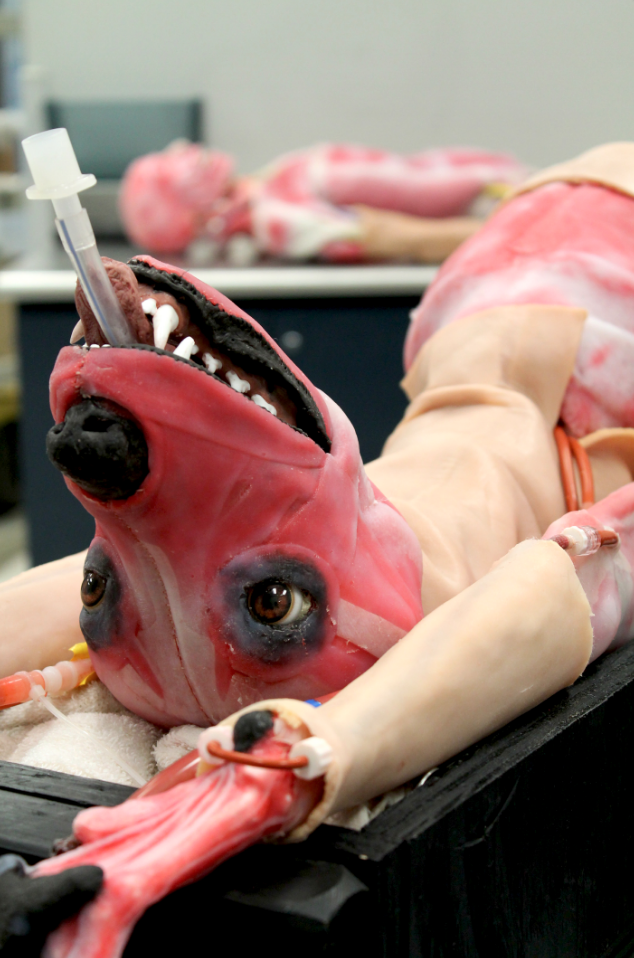Thousands of animals could be saved from undergoing medical procedures in veterinary training schools worldwide, thanks to a new synthetic dog model developed by scientists in the US.
SynDaver Labs, a leading manufacturer of synthetic humans, has unveiled the SynDaver Synthetic Canine.
The synthetic dog, which is skinless, has been designed to be a realistic and detailed surgical trainer for veterinary students, who currently test on live animals and animal cadavers.

The canine models are anatomically accurate, with fat, fascia planes, all bones, muscles, ligaments, fully articulating joints, and each of the bodily systems.
The model has a heart with a heartbeat, a circulatory system, and bleeds when surgical cuts are made.
It also has the capability to simulate customised diseases, illnesses and medical complications.
The canine's synthetic tissue mimics living tissue.
Developers say that the product will immediately end the need for live animals and animal cadavers to be used in veterinary medical schools.
The technology has been hailed by developers as the beginning of the end of animal testing in general.

At the unveiling of the synthetic canine, SynDaver Labs also launched an ambitious fundraising campaign.
The manufacturers hope to raise $24 million in order to provide up to 20 synthetic canines to every accredited veterinary college around the world, completely free of charge.
By providing each veterinary college with a full complement of their new synthetic canines at no cost, SynDaver is hoping to effectively eliminate the practice of terminal surgery labs.
In veterinary medicine, terminal surgery labs involve teaching students how to perform certain surgeries on live, anesthetised shelter animals, and then euthanising the animal immediately following the procedure.

SynDaver said that the model will also eradicate the need for canine cadavers, which are also typically euthanised animals from shelters.
“If we launched this product organically, it might take us a decade to put canine cadavers into every veterinary college and many more animals would die needlessly as a result,” said Dr Christopher Sakezles, chief technology officer and founder of SynDaver Labs.
“With the help of the crowdfunding campaign, we can do this practically overnight, and start to put an end to terminal labs for good.”
If SynDaver exceeds their $24 million crowdfunding goal, the company plans to begin working on the SynDaver Synthetic Feline next.
There are also plans to develop synthetic horses and cows.
Scientists are starting to focus more on replacing animals in research with alternative models.
Nearly 4 million animals were used in completed scientific experiments in the UK in 2014, according to the latest Home Office statistics.
The RSPCA reports that 11.5 million animals are being used in the European Union and more than 100 million worldwide.
Founded in 1970, the Dr Hadwen Trust (DHT) has awarded millions of pounds to more than 180 projects that use non-animal models in scientific procedures.
The 3Rs, replacement, reduction and refinement, help to regulate the use of animals in scientific procedures. The DHT’s primary focus is that of ‘replacement’.
In the past five years, the DHT has invested about £3.2 million in research projects.
From leukaemic stem cell research to 3D models of the human blood-brain barrier, the research projects it funds differ hugely. And the scope for non-animal models is increasing.
